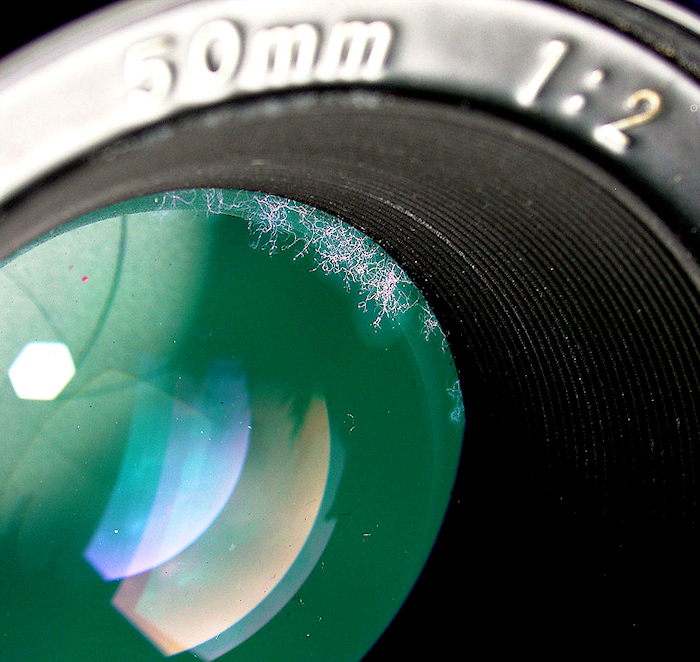Replay: If you’re serious about looking after your gear, investing in a dry box could be a must. Here’s why.
Until very recently, a dry box was not on my radar. To the best of my naive, insufficient knowledge, it ceased to exist. Based in the UK, the cool climate and temperatures were never something that bothered me when it came to storing my camera gear. When not shooting with them, I just popped my cameras on the shelf in my storage cabinet and thought nothing else of it. I suspect that the vast majority of us do the same.
However, all of this drastically changed when I moved to Indonesia a few weeks ago. Here on the island of Lombok, just 8 degrees south of the equator, things are very hot and sticky. During the wet season (October - March), the humidity often sits around 70-80% which, if you didn’t know already, is almost unbearable.

Lombok, Indonesia.

My mother-in-law quickly pointed out that this presented me with a new storage challenge. No longer could I just place my cameras on the shelf. I needed a ‘dry box’. This was all new to me. Why do I need one and what exactly is it?
To answer this, it’s perhaps best to imagine yourself searching on eBay for a second-hand bargain lens or camera. Along with scratches and clear signs of damage, what is one of the first thing’s you’re looking for as you zoom in on each and every photo? Fungus.

Lens fungus.

Typically, fungus grows on and around your camera lenses and, when connected to your camera body, can spread easily here too. Like a sinister, invisible virus, a combination of dust and moisture finds its way into the interior elements of your gear. Usually, dust by itself won’t cause an issue but if the dust contains fungus spores that are combined with moisture, voilà. You have the perfect conditions for fungus to grow and thrive.
In particular (and in hindsight unsurprisingly), I was horrified to read that it is more common with lenses that are not weather sealed and used in very humid, tropical areas. Left untreated, lens fungus can permanently decrease the image quality of your lens, causing your photos and footage to look fuzzy or hazy thanks to the little white splodges of fluff growing all over the glass. I looked down alarmingly at my Sigma 18-35mm F/1.8 Art Lens, like a mother worried for her child. Here in Lombok, it was vulnerable.
The question is, do you need one? You may be reading this thinking ‘well, I don’t live in South East Asia, I’m nowhere near the equator’. However, there are a few factors to weigh up here.
Even in the UK and all over the Northern and Western hemisphere in cooler temperate climates, there may be enough moisture to cause trouble in the right conditions, especially in seaside areas. We’re guilty of storing our gear in cupboards and drawers. Naturally, these are dark and humid spaces. It may take time (probably years), but don’t be surprised to find that eventually, you may too find yourself with a fungus problem. There’s a reason why plenty of cameras and lenses on the second and third-hand markets suffer from this.
Secondly, consider how you use your gear. If you’re constantly using it day in, day out, the chances of it developing any fungal issues are pretty slim. When the cameras are out in the sunlight and air, the fungus has little to no chance of getting in. However, if you’re storing your equipment for weeks or months at a time, you need to keep a watchful eye under that lens cap. Working in any type of wet or humid conditions (that’s me) will guarantee the accumulation of moisture, even when the gear isn’t directly exposed to rain. The last thing you want to be doing after a shoot like this is putting it away in a dark, warm cabinet. You may as well place some cheese in a petri dish.
So, if you’re really serious about looking after your equipment which no doubt costs thousands of hard earned pounds and dollars, you need a dry box. I got to work on Google and found two solutions:
Desiccant dry boxes
The simpler and cheaper of the two options, the desiccant dry box is a sealed, airtight box containing silica gel (or something similar). These are super easy to manage and super cheap. In fact, you can even make your own. By using something like a peli hard case and chucking in a few silica gel pouches, you’re good to go. Thanks to this and the fact that they don’t need any electricity to work, they’re very portable.
Of course, if you keep the box open by accident or, just through the fact you keep having to open it to get your gear in and out, the box may well become saturated with moisture. You’ll need to regularly change the desiccant inside. Furthemore, there is no regulator or controller on these things.
Electronic dry boxes
Enter the electronic dry box. This type of dry box uses multi-porous molecular sieve desiccants with automatic regeneration mechanisms. In short, it’s using condensation to help remove the moisture from the inside of the cabinet.
Whilst more expensive and far less portable (thanks to their need for a constant power source), these dry boxes will be fitted with a dial that allows you to control and adjust the humidity level. Depending on how much you want to spend, you’ll find plenty of designs connected to a digital hygrometer where you can set a precise level that will remain stable.
So, what did I go for? Easy answer. Whilst I like how cheap and easy the desiccant options are, I feel that given my location (it rains a lot, it’s always unbearably humid), I needed to invest in an electronic option. Making my way through a hardware store, I picked one up for around £70 which seems like a fair deal.
An electronic dry box like this might be your best option in some countries.
A quick glance on Amazon tells me that you can find a similarly priced one in Europe, as well as plenty of other options that easily run past the £300 mark. If I was based in the Northern/Western hemisphere well away from the equator, I would be tempted to go with a desiccant option.
What are your thoughts? Are you making use of a dry box? What are some of the best brands out there? Let us know in the comments!